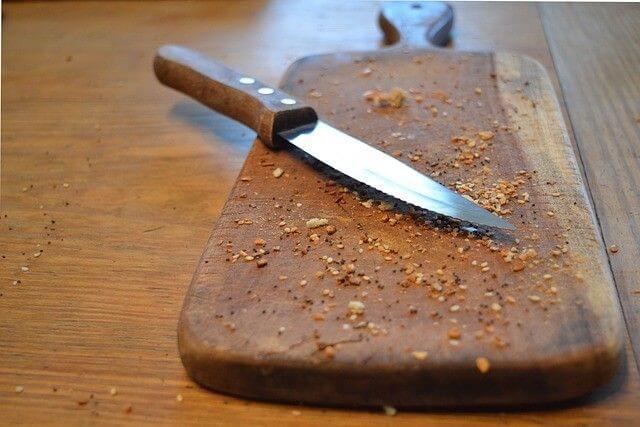
You might be surprised to know that the way you’ve been doing things in the kitchen has been wrong this whole time. There are probably cooking and preparation techniques you’ve learned from your parents, who learned from their parents, and so on, but that doesn’t necessarily mean they’re the best for your health or safety.
Some of the biggest kitchen mistakes are also the most common, so don’t feel bad if you catch yourself red-handed doing one of the things we’re about to mention. It’s important to recognize these mistakes so that you can fix them for a healthier, happier kitchen (and meal!). Keeping a clean and organized kitchen is the first step in avoiding cooking mistakes, here are some others to keep in mind.
Using One Cutting Board for Everything
Cross-contamination is when one food gets contaminated by another, putting it at risk of being harmful to you if you eat it. This typically involves raw meats contaminating other foods that don’t need to be cooked, like fruits, vegetables, or herbs and spices.
It leaves less of a mess and inconvenience for you to use one cutting board for all your prep work, but this is, hands down, one of the unhealthiest things you can do in the kitchen. Think about it: you cut raw chicken on the cutting board. The natural juices are now on its surface. You use the same surface to chop celery, peppers, and onions, which now have encountered chicken juice.
The best thing to do is have two cutting boards – one for meat and the other for everything else – to lower the risk of cross-contamination.
Storing Things in the Fridge Incorrectly
The fridge is also a big culprit for cross-contamination. Storing raw meat on the top shelf and a gallon of milk below it could be a recipe for disaster. Even if you store raw meat in a well-sealed container, there’s still a chance for the liquid to escape, so it’s better to be safe by storing it properly.
If needed, adjust your shelves so that the upper ones can house larger items and the bottom shelf can store meat.
Relying on Your Sense of Smell Alone
Do you often smell food you pull out of your fridge to make sure it’s still safe to eat? Many people do this with milk and leftovers, especially. Using your sniffer is one way you can usually tell if something’s spoiled, but it certainly shouldn’t be the only sense you rely on.
Touch can also help you decide if something might need to go in the trash. Steak and chicken, for example, get a filmy, slippery feel when they start to spoil, which is a good sign you need to toss them. Your eyes can also help! You can usually see the filmy substance on meat, too, but you can also look for things like discoloration, mold, and any other notable changes that make your leftovers look different than before.
Not Giving Your Steak a Rest
Both before and after cooking, your steak needs a break to live up to its full potential! When you’re in a rush, you might be tempted to pull a boneless strip steak from the refrigerator and put it right into a heated skillet, but you might end up overcooking it that way.
Instead, give steak about 20-30 minutes to come to room temperature before cooking. This lets the meat get as close to eating temperature as possible, so the inside of it cooks quicker and doesn’t leave you with an overcooked crust.
After cooking, you also need to let it rest for 5 to 10 minutes to allow the steak to absorb all those yummy juices throughout, keeping it tender and flavorful. In other words, there should be no rushing when it comes to enjoying your steak from the Chicago Steak Company!
Forgetting to Sharpen Knives
If you find that you need to hack away at your food for several minutes with a knife, you’re probably way overdue for a knife sharpening. It’s easy to forget that a set of knives needs some upkeep to perform at its best, but it’s important to get on a regular maintenance schedule to avoid ruining your food.
Sharpened knives should glide through meat and vegetables with ease and very little pressure. An electric sharpener can sharpen them quickly to get you back to cutting, but there are also several small manual sharpeners that can do the trick.
Conclusion: Avoiding Common Kitchen Mistakes
Now you know what mistakes could be costing you the best dinner possible and how to avoid them! Tweaking your preparation, cooking, and storing habits can put you on track to creating the safest, most delicious meals at home. Check out Steak University for more helpful tips, cooking guides, and recipes.

